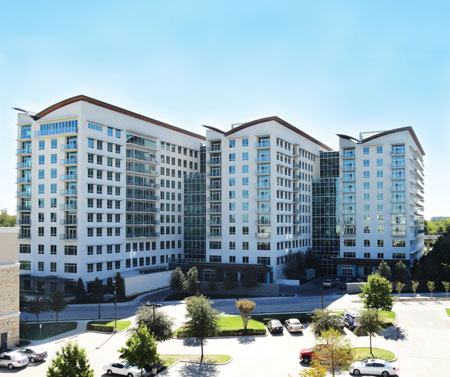If you or someone you love is currently a resident in an independent living community, you may wonder how to know if, and when, the time is right to make a move to assisted living. It’s not unusual for people to have some misconceptions about the transition. While some may think a move to assisted living would mean giving up independence, nothing could be further from the truth. More often, it’s a decision to keep your independence longer. Let’s explore this concept by answering, “What is assisted living?” and consider the differences found in independent living vs. assisted living.

What Is Assisted Living?
For those who are still able to live independently but need, or would benefit from, some extra help with activities of daily living (ADLs), assisted living is the perfect environment. ADLs include routine activities like bathing, dressing, cooking, medication management, and even shopping for essential goods. Assisted living residents typically live in private homes or apartments and are able to pick and choose which activities they want extra help with, allowing them to optimize their sense of independence. They’re also able to travel as they please with help from scheduled or requested transportation provided by the community.
But assisted living is more than just assistance with ADLs. Like independent living, one of the greatest benefits of senior assisted living is being immersed in a community of like-minded people who want to hold on to their independence. Sharing meals with friends and neighbors and joining in on the array of engaging activities usually offered by senior living communities is proven to bolster your mental, emotional and physical well-being.
Independent Living vs. Assisted Living
As we’ve discussed, the key difference that distinguishes independent vs. assisted living is the level of help assisted living residents receive on a daily basis. It’s that helping hand with things like medication management and mobility. It’s simply knowing that someone is available, around-the-clock, to offer necessary assistance. But in senior living communities that offer a full continuum of care, independent living vs. assisted living can often be pretty seamless. Both offer a variety of restaurant-style dining options, as well as room service. And both options generally include access to a full calendar of performing arts events, guest lectures, classes and small groups dedicated to shared interests.
When to Move to Assisted Living
The fact is, you will inevitably need a bit of extra help as you age. Choosing the right time to acknowledge and ask for help could have a substantial impact on how well you age. In general, the sooner those who need daily assistance move into assisted living, the longer they’re able to keep the level of independence they currently enjoy.
If you or your loved one has difficulty preparing meals, managing medication, dressing, bathing, or any other ADL, it may be time to consider a move to assisted living. Those who make the decision early not only keep their independence longer; they also find that with the challenges that once burdened their daily lives removed, they have more time to enjoy the multitude of offerings in their assisted living community.

Assisted Living at The Stayton
When you’re searching for “assisted living near me,” look no further than The Stayton. In our full continuum of care, including independent living, assisted living, memory support, skilled nursing and rehabilitation, you’ll find that moving to assisted living — or any other additional care level — is a seamless transition. Thanks to Life Care, independent living residents have priority access to all additional care levels at any time with no substantial increase in your monthly fees. The lively cultural life you’ve grown accustomed to is always accessible from your private-yet-spacious assisted living apartment — with nothing but optimism for your future. When you’re ready to learn more about The Stayton, you can call us at (817) 349-7140 or contact us online.
